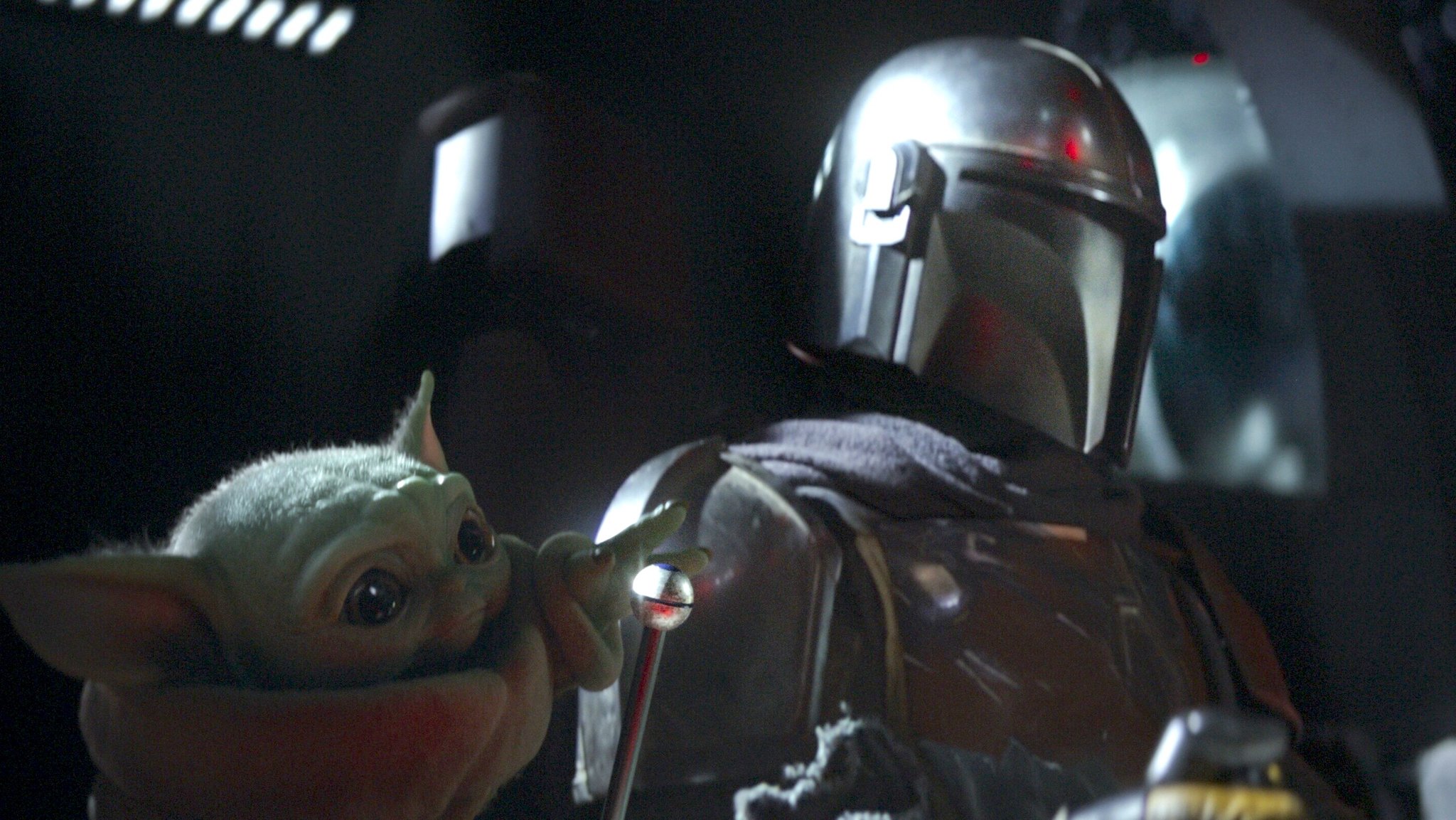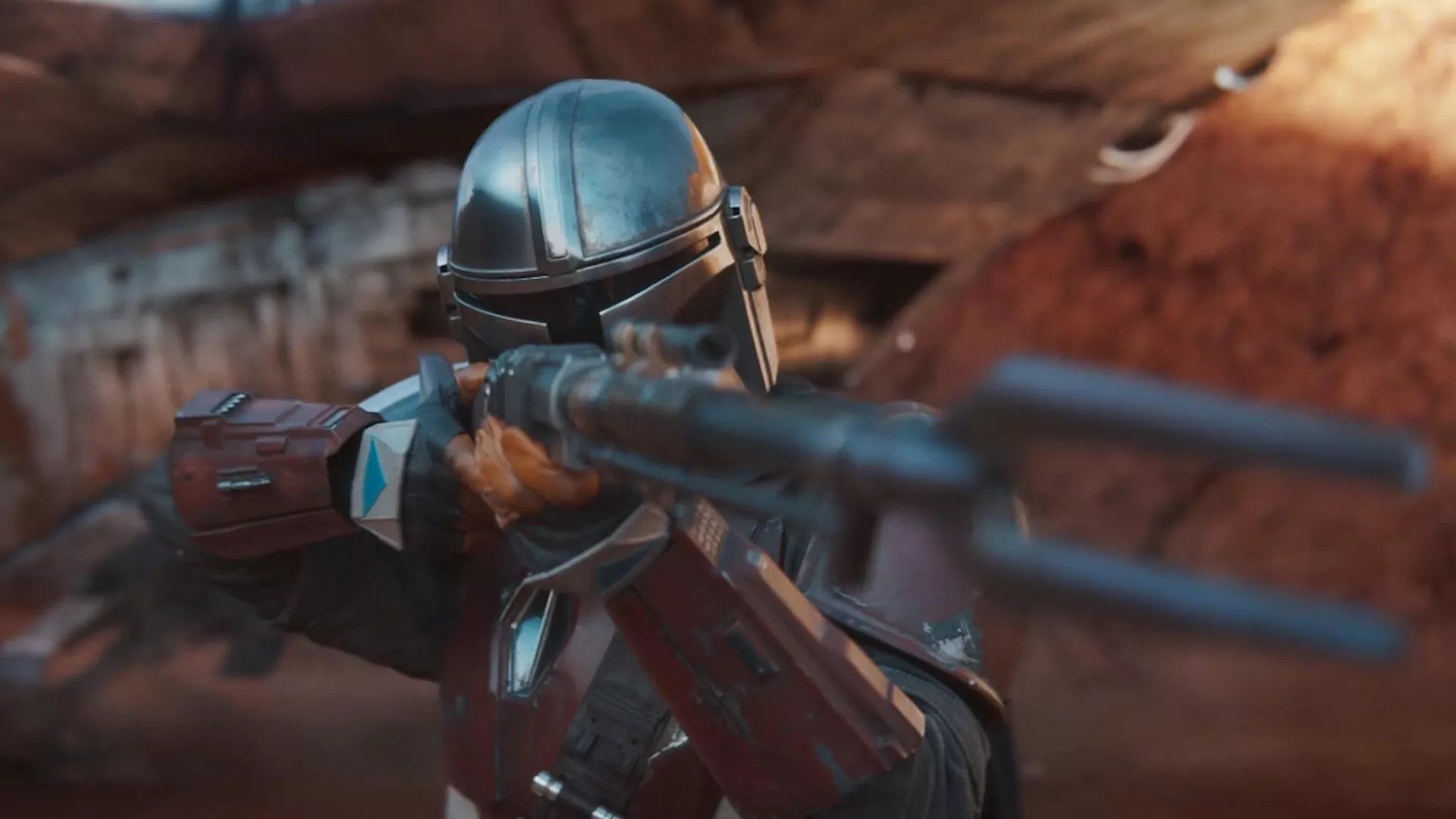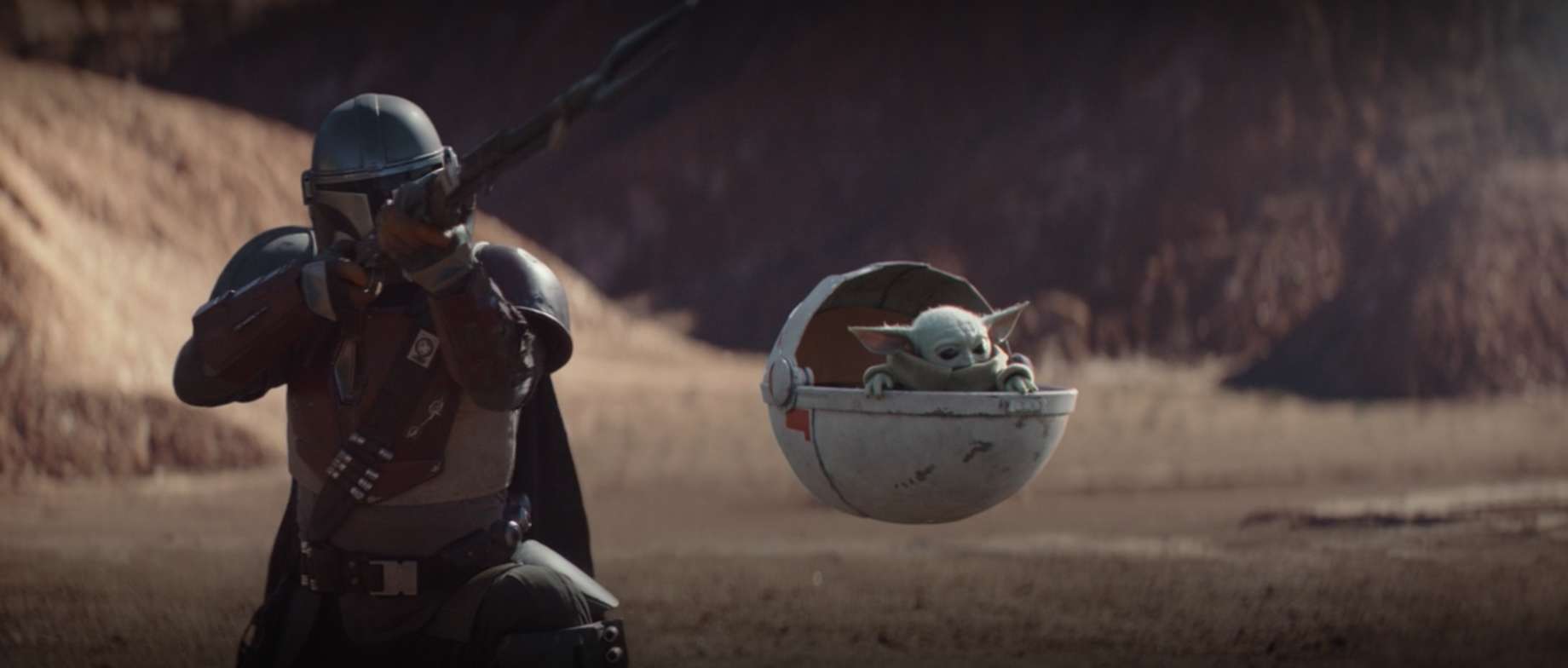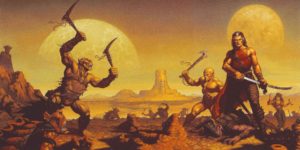
Warning: This post contains spoilers for The Mandalorian up to the end of Chapter Four
At first glance, I wasn’t particularly excited about The Mandalorian. While the initial trailer showcased intricately designed sets and impressive production value, it seemed as though we would be following a laconic Clint Eastwood type and his misadventures in the criminal underworld. Although it is possible to create a terse anti-hero protagonist that is compelling, more often than not this leads to thin stories that rely on violence over character growth and embody style over substance. Worse yet, it seemed possible that the decision to follow a mostly silent main character was born out of a desire to cash in on the fanservice associated with the bounty hunting Mandalorian Boba Fett.
And even if these tendencies were averted, it also seemed conceivable that the proceedings would veer towards the grim-dark tendencies of prestige TV. This style of storytelling has become such an overpowering presence in modern television writing that I’m frankly sick of this deluge of half-baked meditations on the bleakness of the human soul. One of my favorite attributes of Star Wars is the series’ fundamental belief that despite our terrible inclinations, we still have a shot, a viewpoint directly contradicted by a vast swath of the shows that dominate the current moment.

For roughly two weeks following the show’s release, this web of anxieties and overanalysis based on a two-minute trailer managed to win out, keeping me firmly out of the series’ orbit. But then, something changed. Between the deluge of memes and Werner Herzog’s passionate plea, it became clear what the real selling point of the series was. Baby. Yoda. And while I gave this series a shot due to internet jokes, and because I found it funny that an acclaimed avant-garde film director had weirdly high words of praise about an ornate puppet, I soon found that this unspeakably adorable alien is the secret sauce of this show’s success so far.
In Mando we have a gruff warrior whose life has almost entirely revolved around violence and bounties. He travels the universe, never concerning himself with morality or the lives of those he brings in. All in the pursuit of credits and new shiny pauldrons to adorn his armor. Following the strict Mandalorian code, his helmet remains on at all times, genuine connection a distant afterthought. But that all starts to change once he meets the kid.
By the end of the first episode, this story’s core dynamic shifts from depicting a lone gunslinger to something else entirely. Something less A Fistful of Dollars, and more Wolf and Cub. This paradigm shift is important because it sets the thematic base for the entire series. The Mandalorian finding the Child isn’t just a great moment because it plays with our attachment to the lore of this universe, or just because the Yodaling is one of the cutest creatures to ever grace this world. It is also a great moment because it makes it clear that this story will be about a bucket-headed gunslinger becoming human.

When Mando meets the kid he is immediately forced to consider the way he has been living his life. Will he turn him in for the bounty? Will he continue to avoid asking questions, flying from corner to corner of this world aprehending those who may or may not deserve it? The Mandalorian only gets a single episode of solitary brooding, which is necessary for setting up the status quo, but soon after this, he is forced to directly confront his actions. And the best part is that all of this feels natural because it’s completely plausible to believe that even a grizzled mercenary would be forced to reconsider his ways when confronted with the imminent cuteness and innocence of Baby Yoda.
Chapter Three handles this well, the initial inertia of his well-worn habits almost leading to our protagonist making a big mistake. Old routines are hard to shake, and if it wasn’t for finding the little ball that the kid was playing with, it’s possible that he would have kept on flying to the corners of the world, trying to outrun his mistakes. This is a great manifestation of our lead’s moral choice and works as a natural turning point for his redemption. When he decides to swoop in and save the kid from the Empire we finally get to see our lead fighting for what he knows is right.
Chapter Four continues this trend, forcing the Mandalorian to directly address the seemingly toxic nature of the warrior code he is sworn to. Is a creed that forces its participants to shut themselves away from others, and simply internalize their pain justifiable? Is the helmet simply a way for Mando to attempt to hide from his childhood trauma, a way to steel himself against what happened to him? Again, all of this reflection feels natural as the Mandalorian is shaken from his old modus operandi thanks to the presence of Baby Yoda. In addition to bringing about the beginnings of deeper personal change, the dynamic that the two share is already blossoming into something that is incredibly fun to watch from moment to moment. Baby Yoda randomly flipping the switches on Mando’s ship, him sipping bone broth as he watches is surrogate dad get into fistfights, and the one-sided banter makes this show unexpectedly cozy.

The kid even gives the story a clear structure and greater significance in the context of this world. The fact that Baby Yoda has the potential to become a powerful force user means that this story can be tied into the greater canon. And in terms of this specific story, he grants clear and present stakes, because no matter what this wonderful frog-eating goober must be protected. It adds a constant degree of tension because while our main character is a formidable warrior who is impervious to blaster fire, he has to defend a fragile little green baby in a potato sack.
My biggest concern about this series was that it would simply detail antics of a heavily armored badass as he stoically blasts his way through the criminal underbelly. The actual premise of the show is so much better. Here, a seasoned killer is constantly forced to address his morality due to his companion, a shining little beacon of innocence. This conceit engenders the story with humor and some slice-of-life comfiness which complements all of the gunslinging and action. While it’s impossible to know where The Mandalorian will go from here, it’s already begun to address the baggage of its lead, giving us a few glimpses into his past as he breaks out of his nihilistic cycle of bounty hunting. And who knows, maybe someday he’ll even take off the helmet.






